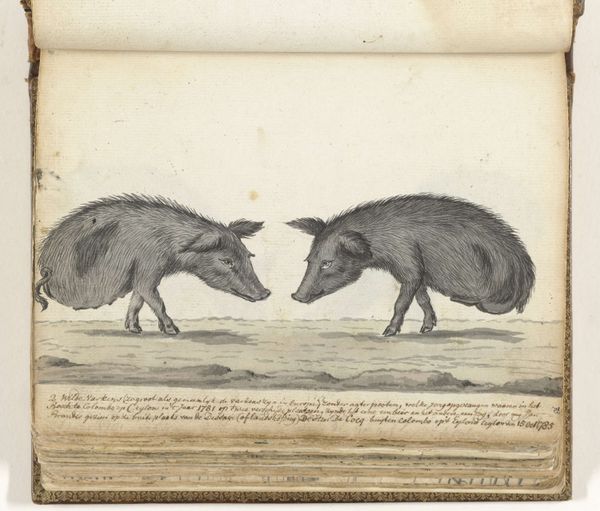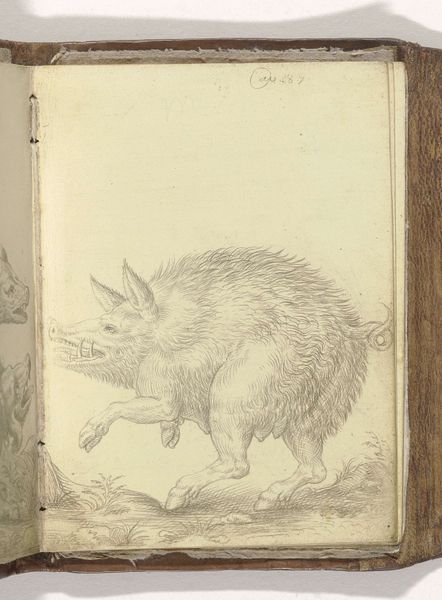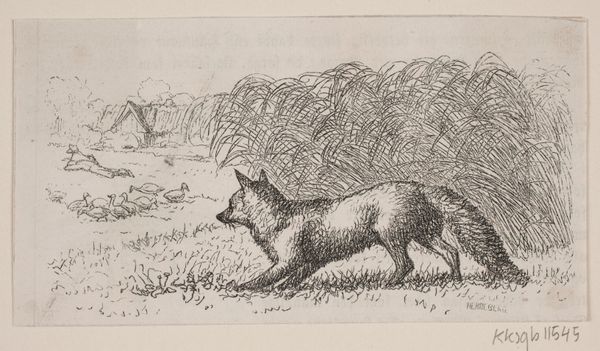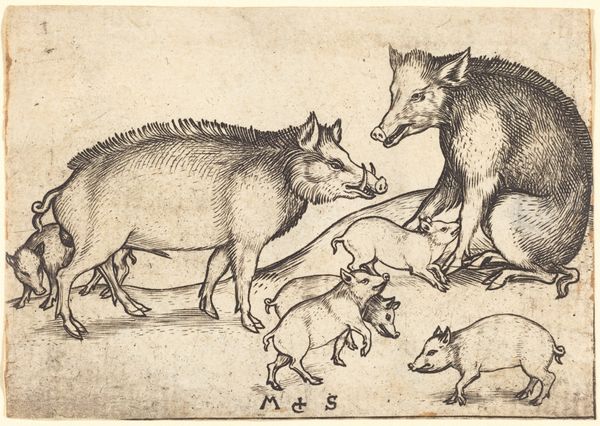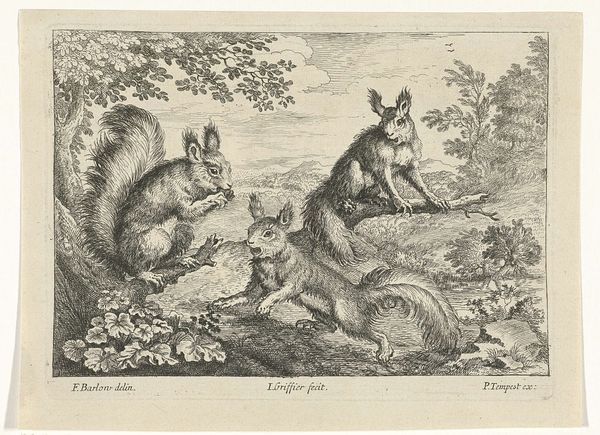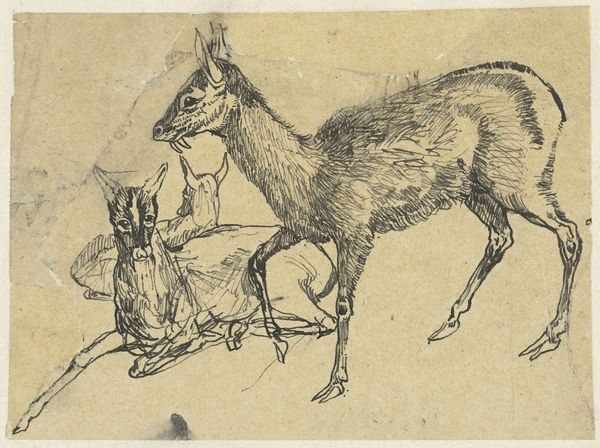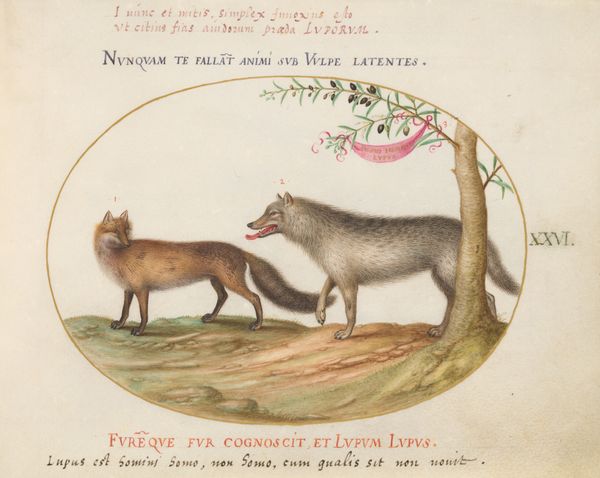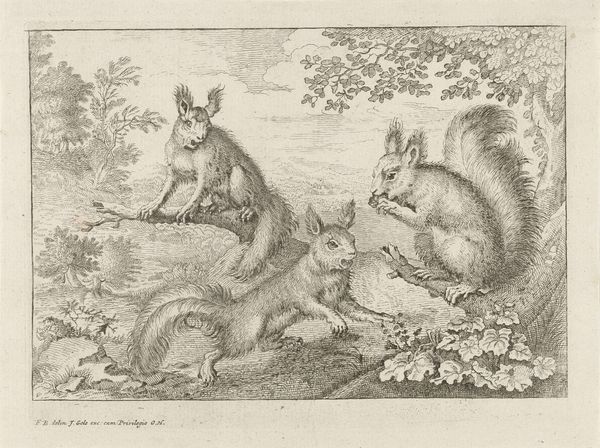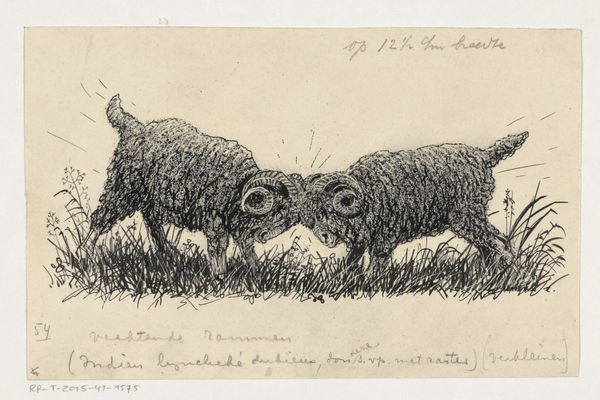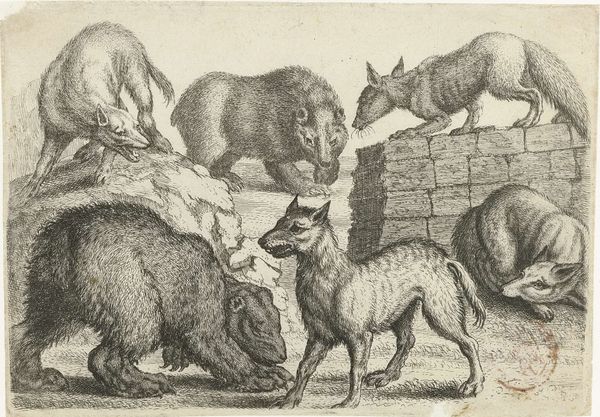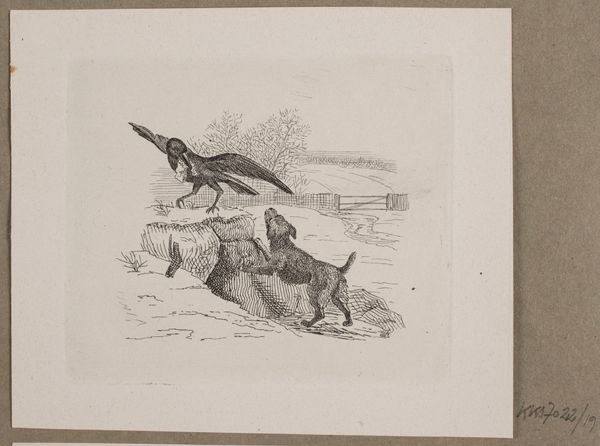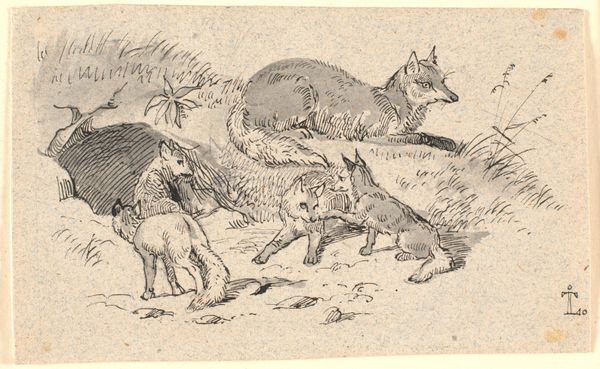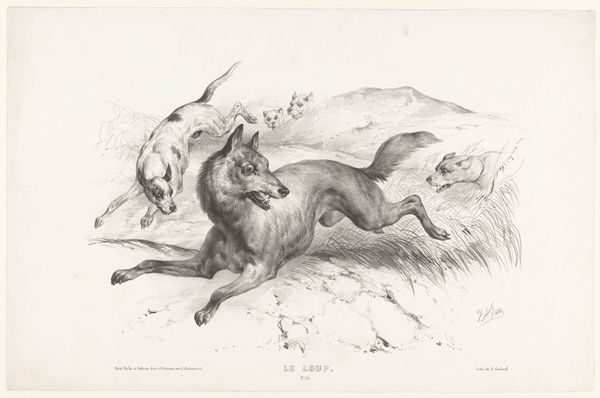
drawing, paper, watercolor, ink
#
drawing
#
animal
#
pencil sketch
#
landscape
#
paper
#
watercolor
#
ink
#
watercolour illustration
#
genre-painting
#
realism
Dimensions: height 155 mm, width 195 mm
Copyright: Rijks Museum: Open Domain
Editor: This is "Pigs without Hind Legs at Trough," possibly from 1785, by Jan Brandes. It appears to be made with ink, watercolor, and pencil on paper. The sketch has an odd tone to it, with those misshapen pigs. How do you interpret a work like this? Curator: It's definitely unusual. The inscription indicates Brandes observed these pigs near Colombo. Given Brandes’ work documenting his travels, it's easy to think that it is simply a record of a strange scene encountered in Sri Lanka, now colored by our contemporary views about representing physical difference. How was disability understood and visually represented in the 18th century, within colonial contexts? Editor: That’s a great point! It prompts thinking about the politics embedded in its seemingly simple visual representation. Is he making a commentary? Curator: The ‘genre-painting’ style suggests an interest in everyday life. Perhaps Brandes aimed to capture a curiosity, or even elicit a form of pity or fascination from a European audience. Think about how the consumption of exotic animals or freak shows contributed to social norms, what role the artist play by ‘framing’ the subject, and which audiences get access to these works through distribution or at institutions. It’s not a neutral depiction. Editor: So, beyond just seeing two pigs eating, there’s a lot to unpack about colonial observation and the spectacle of difference. I hadn’t thought about that. Curator: Precisely. Art often holds a mirror to society, reflecting not only what is seen, but also who is looking and why. And furthermore what agendas are in play when deciding who is *not* looking. Editor: I will definitely be taking more into account the colonial context with these types of works. Thanks.
Comments
No comments
Be the first to comment and join the conversation on the ultimate creative platform.
